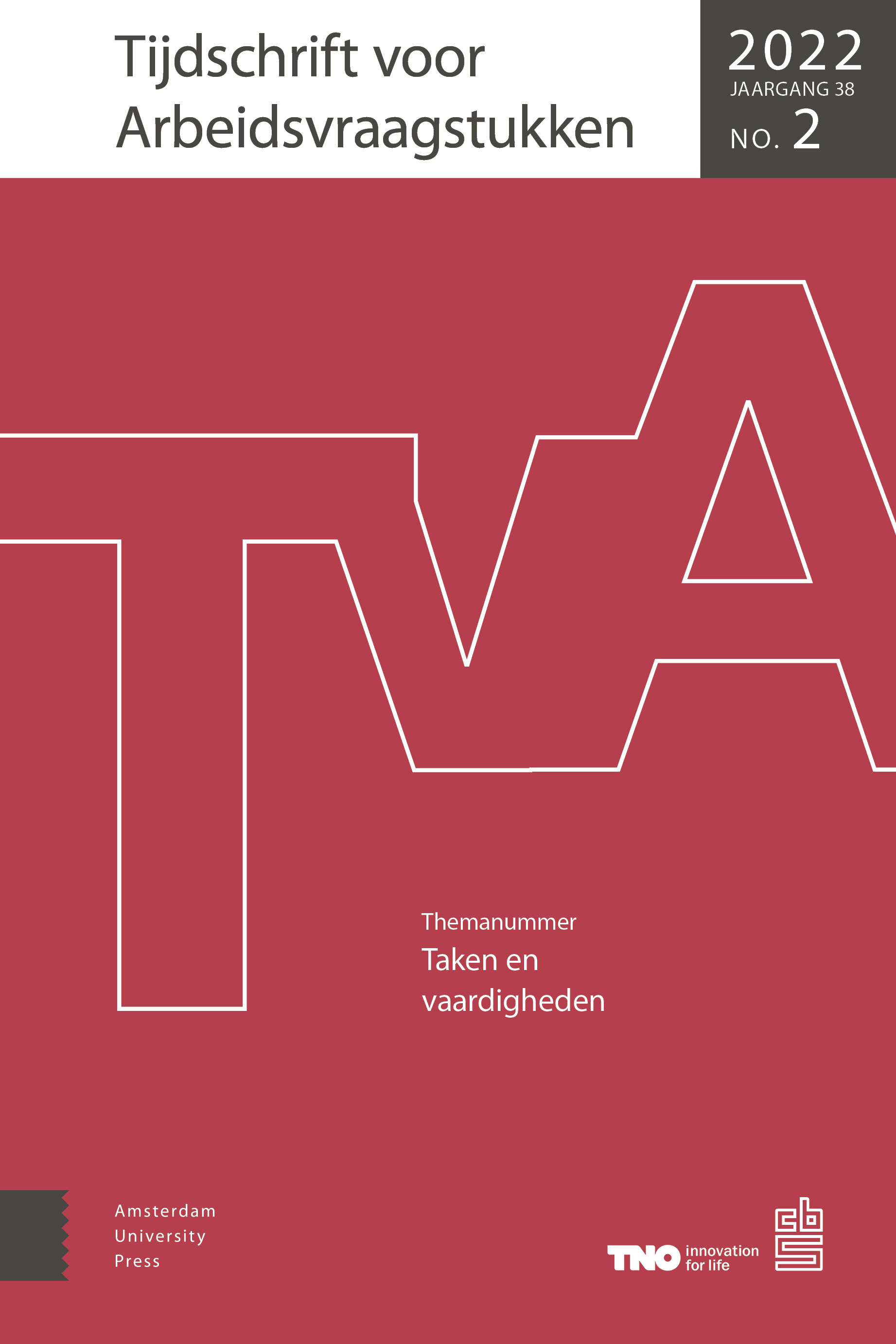-
f Contactintensiviteit en automatisering: welke beroepen zijn bijzonder kwetsbaar door een pandemie?
- Amsterdam University Press
- Source: Tijdschrift voor Arbeidsvraagstukken, Volume 38, Issue 2, Jun 2022, p. 154 - 168
-
- 01 Jun 2022
Abstract
In deze bijdrage onderzoeken we de mate waarin beroepen kwetsbaar zijn tijdens pandemieën en daardoor mogelijk sneller automatiseren dan voorheen gedacht. Daarvoor maken wij, in navolging van buitenlands onderzoek, een proximity-index voor beroepen op de Nederlandse arbeidsmarkt op basis van O*NET-data. Deze index geeft aan in welke mate het uitoefenen van beroepen door lockdownmaatregelen tijdelijk kan worden beperkt (omdat ze contactintensieve taken hebben), waarbij we rekening houden met het feit dat sommige contactintensieve beroepen ook tijdens een pandemie onontbeerlijk zijn (cruciale beroepen). Wij laten zien dat de beroepen die zowel een verhoogd risico op pandemiegerelateerde overheidsmaatregelen als een verhoogd automatiseringsrisico hebben, gekenmerkt worden door een laag opleidings- en vaardigheidsniveau van werkenden. Ook zijn dit beroepen waarvoor de werkgelegenheid al voor de pandemie aan het afnemen was en waarvoor in de komende jaren een verdere krimp in de werkgelegenheid wordt verwacht.


